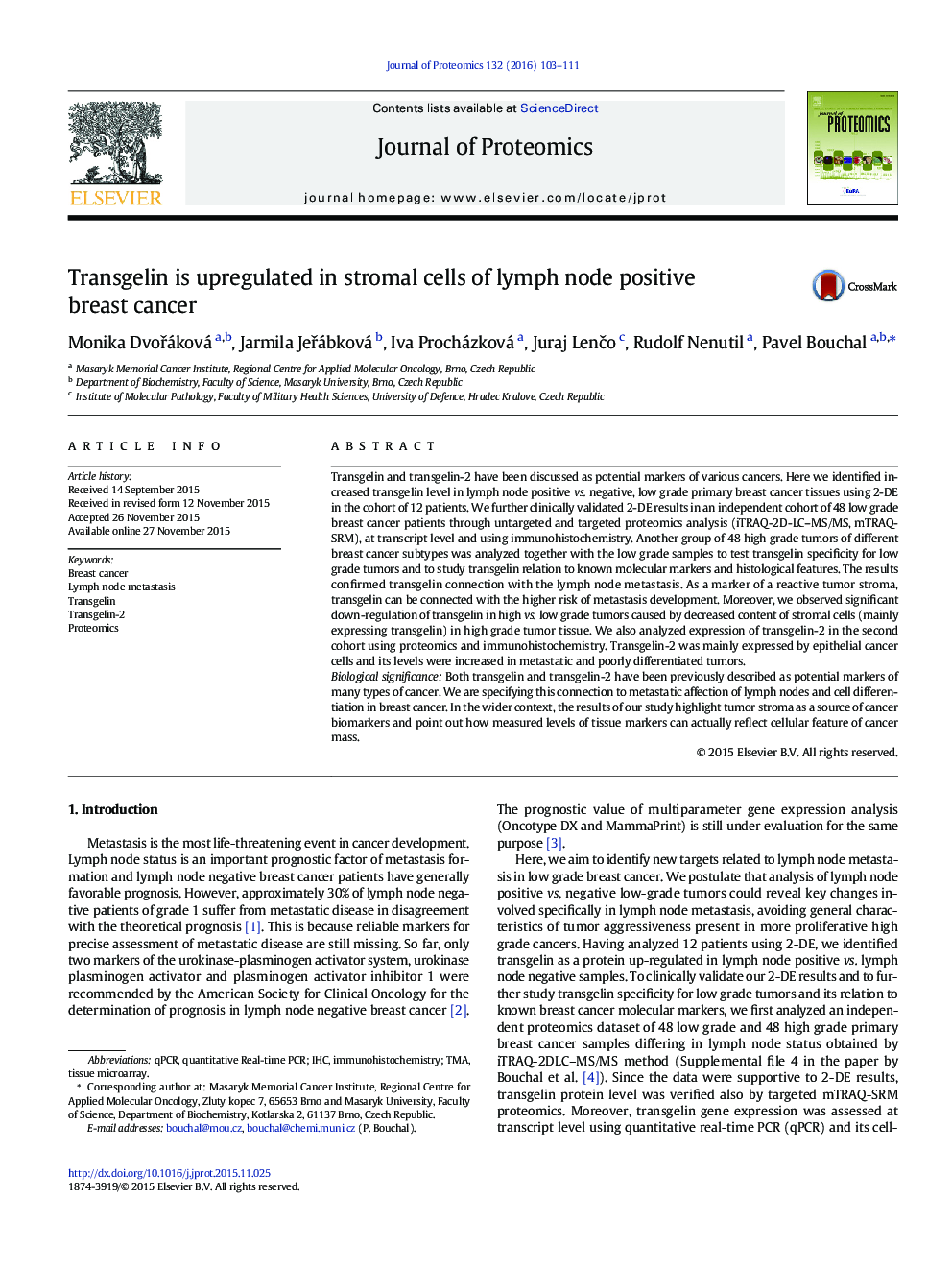| Article ID | Journal | Published Year | Pages | File Type |
|---|---|---|---|---|
| 1225279 | Journal of Proteomics | 2016 | 9 Pages |
•Transgelin is upregulated in lymph node positive breast cancer samples.•Its expression is not driven by known breast cancer molecular markers.•Transgelin is expressed by the cells of tumor stroma.•Transgelin is downregulated in high grade vs. low grade breast cancer samples.•This reflects lower content of stromal cells in high vs. low grade tumors.
Transgelin and transgelin-2 have been discussed as potential markers of various cancers. Here we identified increased transgelin level in lymph node positive vs. negative, low grade primary breast cancer tissues using 2-DE in the cohort of 12 patients. We further clinically validated 2-DE results in an independent cohort of 48 low grade breast cancer patients through untargeted and targeted proteomics analysis (iTRAQ-2D-LC–MS/MS, mTRAQ-SRM), at transcript level and using immunohistochemistry. Another group of 48 high grade tumors of different breast cancer subtypes was analyzed together with the low grade samples to test transgelin specificity for low grade tumors and to study transgelin relation to known molecular markers and histological features. The results confirmed transgelin connection with the lymph node metastasis. As a marker of a reactive tumor stroma, transgelin can be connected with the higher risk of metastasis development. Moreover, we observed significant down-regulation of transgelin in high vs. low grade tumors caused by decreased content of stromal cells (mainly expressing transgelin) in high grade tumor tissue. We also analyzed expression of transgelin-2 in the second cohort using proteomics and immunohistochemistry. Transgelin-2 was mainly expressed by epithelial cancer cells and its levels were increased in metastatic and poorly differentiated tumors.Biological significanceBoth transgelin and transgelin-2 have been previously described as potential markers of many types of cancer. We are specifying this connection to metastatic affection of lymph nodes and cell differentiation in breast cancer. In the wider context, the results of our study highlight tumor stroma as a source of cancer biomarkers and point out how measured levels of tissue markers can actually reflect cellular feature of cancer mass.
Graphical abstractFigure optionsDownload full-size imageDownload high-quality image (73 K)Download as PowerPoint slide
